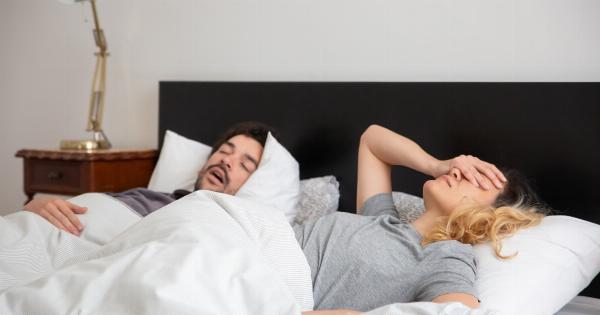Snoring is commonly associated with men and is often regarded as a harmless habit. However, snoring is a serious condition that affects men and women equally.
According to the National Sleep Foundation, nearly half of all adults snore occasionally, and around 25% snore regularly. Women are no exception, and it’s time to raise awareness about this issue.
Why women snore?
There are several reasons why women snore, including overweight, physical abnormalities in their nasal passages, and obstructive sleep apnea. Menopause is another factor that increases the likelihood of snoring in women.
During menopause, hormonal imbalances can cause relaxation of the throat muscles, leading to snoring. Additionally, pregnancy is another common cause of snoring in women. As the uterus expands, it can put pressure on the diaphragm and lungs, making breathing more difficult and leading to snoring.
The silent danger of snoring in women
Snoring is not just an inconvenience or an annoyance; it can be a sign of a more serious underlying health condition.
Women who snore regularly are at an increased risk of developing high blood pressure, cardiovascular disease, stroke, and type 2 diabetes. These conditions are all linked to sleep apnea, a sleep disorder characterized by frequent pauses in breathing that can last from a few seconds to a minute or more.
Sleep apnea and women
Sleep apnea is often thought of as a man’s problem, but women are equally susceptible. However, women’s symptoms are often different from those of men, and their diagnosis can be delayed or even missed entirely.
While men with sleep apnea tend to snore loudly, women may experience more subtle symptoms such as snorting, gasping, or choking sounds. Additionally, women with sleep apnea may experience daytime fatigue, mood swings, and difficulty concentrating, which can be mistaken for other conditions.
Treatment options
If you’re a woman who snores, it’s essential to see a healthcare provider to determine the underlying cause.
Lifestyle changes, such as weight loss, regular exercise, and avoiding alcohol and sedatives before bedtime, can help reduce snoring. Nasal strips, mouthguards, and other devices can also be helpful.
For women with sleep apnea, the treatment options include continuous positive airway pressure (CPAP), a mask-like device that delivers air pressure to keep your airways open.
Oral appliances, surgery, and positional therapy can also be helpful, depending on the severity of the condition.
Conclusion
Women snoring is not a harmless habit, and it can be a sign of a more serious underlying health condition.
If you or someone you love is snoring regularly, it’s essential to see a healthcare provider to determine the underlying cause and get the necessary treatment. Raising awareness about this issue is crucial to improve women’s health and wellbeing.



























